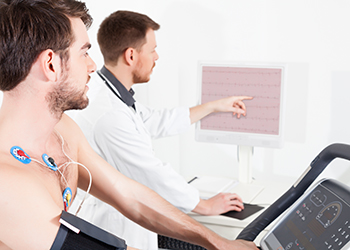Myocardial scarring results from the accumulation of fibrosis in damaged cardiac tissue. Myocardial scarring underpins the two main causes of death in patients with heart failure, namely ventricular arrhythmias and progressive left ventricular dysfunction. Currently, the most sensitive imaging technique for the detection of myocardial scarring, particularly subtle forms, is cardiac magnetic resonance imaging (CMR), with late gadolinium contrast enhancement (LGE) indicating fibrotic areas. However, CMR is expensive and generally difficult to access. In contrast, electrocardiograms (ECGs) are ubiquitous in cardiac care and inexpensive.
“Conventional ECG features are affected by scarring, but the effects, as modelled by regression, are relatively small and lack the sensitivity and specificity to be of clinical utility,” says Roger Tam, Associate Professor in the School of Biomedical Engineering at the University of British Columbia (UBC). “However, there are likely ECG patterns beyond traditional ECG criteria and measurements that can more effectively predict scarring.”
Professor Tam is leading a study to develop and validate machine learning models that utilize ECG data to predict myocardial scarring identified by CMR. If successful, this study will lead to a method to screen for cardiac scarring that is low-cost and widely accessible. The work is being funded by the UBC Office of the Vice-President, Research and Innovation.
According to Professor Tam several recent methods based on deep learning have shown promising results in extracting latent ECG features that predict cardiac dysfunction although very few studies have examined the predictive power with respect to scarring specifically.
Using a retrospective cohort of 1,000 cardiomyopathy patients from Vancouver Coastal Health and Providence Healthcare, the research team will develop machine learning models to:
- Use ECG data to predict global and regional LGE burden on CMR (a measure of myocardial scarring).
- Use ECG data to predict cardiac function measured on CMR, including left and right ventricular ejection fraction.
- Use ECG data, both alone and in combination with imaging features, to predict clinical outcomes, such as ventricular arrhythmia, heart failure, and mortality.
Following the cohort assembly phase of the project, PopData will link the following BC Ministry of Health data sets for analysis: Discharge Abstract Database; National Ambulatory Care Reporting System (NACRS); Medical Services Plan (MSP) Payment Information File; Vital Statistics (Deaths) and PharmaNet.
